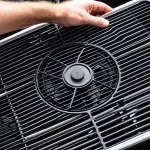British Off-Road Vehicles and Electrical System Waterproofing Needs
British off-road vehicles like the Land Rover Defender and the Land Rover Discovery are designed for rugged terrain but face specific challenges from the UK’s unpredictable weather. Areas such as muddy trails, wet fields, and flooded roads expose these vehicles to moisture risks that can compromise their electrical systems.
Electrical components such as wiring harnesses, connectors, and sensors are particularly vulnerable to water ingress. This moisture can cause short circuits, corrosion, and failures leading to costly repairs or vehicle downtime. In UK conditions, where rain is frequent and puddles are common, the waterproofing basics become essential for maintaining operational reliability.
Also to see : Discover Cutting-Edge Anti-Theft Innovations Revolutionizing the UK Automotive Industry
Waterproofing not only protects electrical components but also ensures consistent vehicle performance under adverse conditions. By sealing connectors, using dielectrics, and applying protective coatings, a British off-road vehicle owner can prevent moisture damage and extend the life of sensitive electrical parts. Proper waterproofing is critical to avoid disruption during off-road adventures and daily driving alike.
Identifying and Assessing Moisture Risks in Electrical Systems
Understanding electrical risks is crucial for anyone maintaining British off-road vehicles in the UK’s damp environment. Moisture can enter electrical systems through multiple common sources, including damaged cable insulation, faulty connectors, or poorly sealed sensor housings. This water ingress can trigger short circuits or corrosion, especially on exposed contact points.
Also to read : The Comprehensive Guide to Mastering Parking Sensor Installation and Calibration for UK Vehicles
The UK’s unpredictable terrain—muddy trails, flooded fields, and persistent rain—significantly increases the impact of moisture on vehicle electrics. Regular moisture detection methods help catch issues early. Using visual inspections to spot corrosion, swelling, or dampness around connectors and wiring is vital. Advanced techniques include employing multimeters to test for continuity and resistance changes that indicate water intrusion.
Off-road conditions expose vehicles to vibrations and impacts that loosen seals or damage wiring, raising electrical risks further. Accurate assessment of moisture entry points allows timely interventions, preventing costly failures. By routinely inspecting vulnerable components—like wiring harnesses near wheel arches or sensor plugs in the engine bay—owners can anticipate and mitigate damage. This proactive approach is essential to maintaining reliable performance despite the UK climate’s challenges.
Essential Waterproofing Materials and Tools
When tackling waterproofing basics in British off-road vehicles, having the right waterproofing materials is crucial to protect against electrical system vulnerabilities. Key products include high-quality sealants like silicone or polyurethane, which create durable barriers against moisture ingress. Heat-shrink tubing is indispensable for reinforcing cable joints, offering both electrical insulation and water resistance. Additionally, dielectric grease is applied to connectors to repel water and prevent corrosion, enhancing electrical contact reliability.
Using proper tools ensures precise application and long-lasting results. Essential items include wire strippers, crimpers, and heat guns for heat-shrink tubing installation. Multimeters aid ongoing moisture detection by verifying circuit integrity before and after sealing. Sourcing waterproofing materials from trusted brands familiar with UK off-road demands guarantees higher performance and durability against wet and muddy conditions.
Together, these waterproofing materials and tools form the foundation for effective moisture damage prevention. They help British off-road vehicle owners secure vulnerable wiring and connectors, maintaining consistent vehicle performance even in challenging UK environments. Proper preparation and selection of these essentials streamline the sealing process, reducing risks of costly electrical failures caused by moisture exposure.
British Off-Road Vehicles and Electrical System Waterproofing Needs
British off-road vehicles such as the Land Rover Defender face harsh environments marked by persistent rain, mud, and water crossings. These conditions amplify electrical system vulnerabilities, exposing wiring harnesses, connectors, and sensors to moisture damage. The most common issues arise from water ingress causing corrosion, short circuits, or sensor failure, compromising vehicle reliability.
Understanding waterproofing basics is essential to mitigate risks effectively. This involves creating secure seals on connectors and cables, using products designed for moisture resistance. Without adequate waterproofing, even a minor exposure to moisture can escalate into costly electrical repairs or unexpected breakdowns during off-road expeditions.
Critical to maintaining operational performance is preventing moisture from penetrating vulnerable points. Applying protective barriers not only safeguards against corrosion but also preserves signal integrity for sensors and electronic controls. In UK off-road conditions where dampness and water exposure are routine, robust waterproofing measures become a necessary investment for long-term vehicle durability and safety. British off-road vehicles relying on these protections can confidently navigate wet and challenging terrains without electrical setbacks.
British Off-Road Vehicles and Electrical System Waterproofing Needs
British off-road vehicles like the Land Rover Defender and Discovery endure harsh UK environments characterized by persistent rain, mud, and flooded tracks. These conditions significantly heighten electrical system vulnerabilities, as moisture readily penetrates wiring harnesses, connectors, and sensors. Without effective waterproofing basics, these sensitive components face corrosion, short circuits, and sensor malfunctions.
Typical vulnerabilities include unsealed connectors and exposed cable joints—common moisture entry points exacerbated by rough terrain and constant wetness. The critical need for moisture damage prevention stems from the fact that even minor water ingress can lead to failures disrupting vehicle reliability and safety.
Waterproofing creates robust barriers against water, improving electrical contact integrity and preventing corrosion over time. Applying sealants, dielectric grease, and heat-shrink tubing are vital steps in safeguarding systems. For British off-road vehicles, where dampness is routine, a proactive waterproofing strategy not only reduces downtime but also extends the life of electrical components. This ensures consistent vehicle performance no matter how challenging UK conditions become.
British Off-Road Vehicles and Electrical System Waterproofing Needs
British off-road vehicles like the Land Rover Defender and Discovery operate in demanding UK environments where rain, mud, and water crossings are common. These conditions expose the vehicles’ electrical systems to significant electrical system vulnerabilities. Moisture can penetrate through unsealed connectors, damaged cable joints, or poorly protected sensor housings, causing corrosion and short circuits.
Understanding and applying waterproofing basics is essential to combat these threats. Effective waterproofing creates barriers that keep moisture away from sensitive electrical components. This includes sealing connectors with specialized sealants, using dielectric grease to repel water inside plugs, and reinforcing cable joints with heat-shrink tubing. These measures form the core of moisture damage prevention strategies.
Without proper waterproofing, even brief exposure to wet conditions can lead to sensor failures or wiring faults that reduce vehicle reliability. Given the UK’s persistent dampness and rough terrain, robust waterproofing is not just a precaution but a necessity. Investing in thorough waterproofing prolongs the lifespan of electrical components, ensuring British off-road vehicles maintain performance and safety during all-weather off-road adventures.
British Off-Road Vehicles and Electrical System Waterproofing Needs
British off-road vehicles such as the Land Rover Defender and Discovery are engineered for rugged UK terrains but face unique electrical system vulnerabilities due to constant exposure to rain, mud, and water crossings. These conditions create multiple moisture entry points, including unsealed connectors, damaged cable insulation, and exposed sensor housings. Such vulnerabilities increase the risk of corrosion and short circuits, which can compromise vehicle reliability and safety.
Why is waterproofing critical for these vehicles? Waterproofing forms the first line of defense in moisture damage prevention by sealing electrical components against moisture ingress. Applying waterproofing basics—such as sealing connectors with silicone or polyurethane sealants, using heat-shrink tubing on cable joints, and greasing contacts with dielectric grease—ensures that moisture does not interfere with electrical signals or corrode conductive paths.
Without proper waterproofing, British off-road vehicles risk frequent electrical failures, leading to costly repairs and downtime. Given the UK’s persistently wet climate and challenging terrain, robust waterproofing ensures dependable vehicle performance and longer service life for vital electronic systems.











